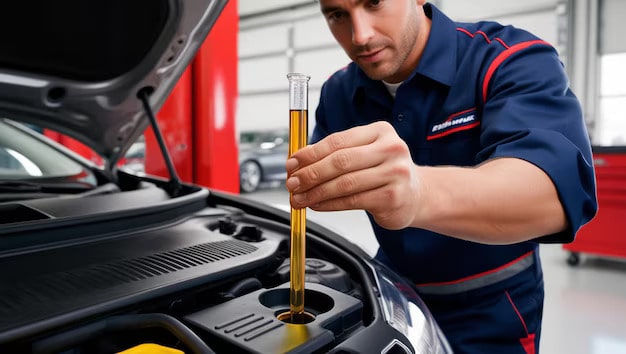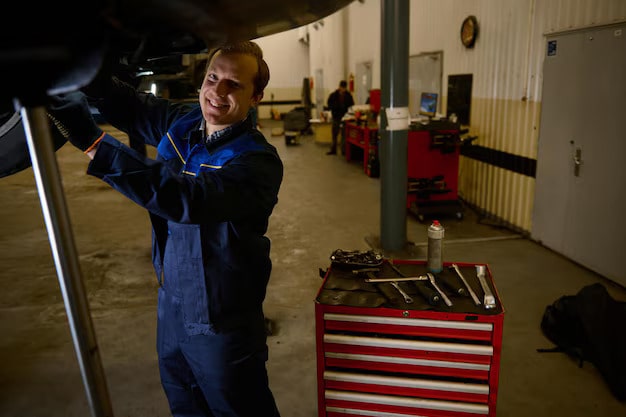- Mikes Automotive
- Automotive Safety
Feeling Every Bump? It Might Be a Suspension Problem
Driving through Pawling, New York, should be a smooth and enjoyable experience, with its picturesque roads and scenic views. However, if every bump and pothole feels like a jolting reminder of your last visit to the mechanic, it might be time to consider the health of your car’s suspension. This post will guide you through understanding what suspension problems are, their causes, symptoms, and solutions. By the end, you’ll know when to reach out to a professional like Mike’s Automotive for assistance.
Understanding Car Suspension
Car suspension is more than just a set of springs. It’s a complex system designed to provide comfort, stability, and safety. Let’s delve into its key components.
Key Components of Suspension
The suspension system includes several parts like springs, shock absorbers, struts, control arms, and bushings. Each piece plays a crucial role in how your car handles road imperfections.
– Springs: These absorb the energy from road bumps and maintain vehicle height. Imagine driving over a speed bump; without springs, the impact would be directly transferred to the car body, causing discomfort and potential damage.
– Shock Absorbers and Struts: They dampen the spring movement to prevent bouncing. Picture driving along a country road with a series of small dips; struts and shock absorbers help stabilize your ride, ensuring that your tires remain in contact with the road.
– Control Arms and Bushings: These connect the vehicle’s frame to the wheels, allowing them to move up and down smoothly. When you’re navigating a sharp turn, control arms and bushings work together to maintain tire alignment and vehicle control.
How Suspension Works
The suspension system works by absorbing and distributing the energy from road impacts. This keeps the tires in contact with the road and stabilizes the vehicle. If any component fails, it can lead to a rough ride and reduced control. For instance, if shock absorbers are worn out, you might experience excessive bouncing, which can make driving both uncomfortable and dangerous.
Signs of Suspension Problems
Recognizing suspension damage early can prevent costly repairs. Here are some signs that you might need a car suspension repair.
Feeling Every Bump
The most obvious sign of a suspension issue is feeling every bump on the road. If your car bounces excessively or feels unstable, the suspension might be compromised. This was the case for a friend of mine who felt every imperfection on the road during a drive to a family reunion, which prompted a visit to Mike’s Automotive for a much-needed repair.
Uneven Tire Wear
Check your tires regularly. Uneven wear patterns often indicate suspension misalignment. This can lead to further damage if not addressed. A neighbor once discovered that his tires had developed unusual patterns of wear, which was eventually traced back to a worn control arm bushing.
Drifting or Pulling
If your car drifts or pulls to one side while driving, it indicates a problem with the suspension or alignment. This can be dangerous and requires immediate attention. I recall driving through a rainstorm, and the persistent pull to the left made steering an exhausting effort, highlighting the urgency of addressing such issues.
Causes of Suspension Problems
Understanding the causes of suspension issues can help you prevent them. Here are the most common culprits.
Regular Wear and Tear
Over time, suspension components degrade due to regular use. Springs sag, shock absorbers lose their effectiveness, and bushings wear out. This natural aging process is accelerated in vehicles driven frequently on rough terrain.
Potholes and Rough Roads
Pawling’s roads, like many others, are not immune to potholes and rough patches. Hitting these can cause significant suspension damage. A particularly deep pothole on my route to work once led to a bent control arm, resulting in a costly repair.
Overloading
Carrying more weight than your vehicle is designed for stresses the suspension. Overloading can cause premature wear and even breakage of suspension components. A family road trip where we packed the car to the brim taught us this lesson the hard way when the rear suspension began to sag noticeably.
Diagnosing Suspension Issues
Before heading to Mike’s Automotive, you might want to perform some basic checks to diagnose potential suspension problems.
Visual Inspection
A quick visual check can reveal obvious issues. Look for leaking fluid around shock absorbers or struts, and inspect tire wear patterns. Spotting a fluid leak early on saved a friend from a more severe shock absorber failure on a long road trip.
Bounce Test
Perform a bounce test by pushing down on the car’s corners and releasing. If the car bounces more than twice, your shock absorbers might be worn out. This simple test confirmed my suspicion about my aging sedan’s suspension issues.
Listening for Noises
Strange noises like clunking or squeaking when driving over bumps often indicate suspension issues. These sounds can help pinpoint the problem. For instance, a persistent clunking noise from the front of your vehicle when driving over a speed bump could suggest a worn-out strut or control arm.
Repairing Suspension Problems
Once you’ve identified a suspension issue, it’s crucial to address it promptly. Here’s how you can tackle these problems.
DIY Fixes
For those with mechanical skills, some suspension issues can be DIY projects. Replacing worn bushings or shock absorbers can be done at home with the right tools. However, be mindful of safety precautions and ensure you have the proper equipment, such as jack stands, to safely lift the vehicle.
When to Call a Professional
Complex problems like broken springs or complete strut replacements are best left to professionals. Mike’s Automotive can provide expert service to ensure your vehicle is safe and comfortable. They have the expertise and equipment necessary to handle intricate suspension systems.
Cost Considerations
Suspension repairs can vary in cost. Minor adjustments might be inexpensive, but major repairs can be costly. Replacing a single shock absorber might range from $100 to $200, while a full suspension overhaul could reach upwards of $1,000 or more. Regular maintenance can help avoid unexpected expenses by catching minor issues before they escalate.
Preventing Future Suspension Problems
Preventative measures can extend the life of your suspension system and save you money in the long run.
Regular Maintenance
Regular inspections and maintenance can catch potential issues before they become serious. Mike’s Automotive offers comprehensive checks to keep your car in top condition. Scheduling a routine suspension check every 12,000 miles or annually is a good practice.
Safe Driving Habits
Driving carefully over rough roads and avoiding potholes can significantly reduce suspension stress. Also, ensure your vehicle is not overloaded. Practicing defensive driving techniques can also help avoid sudden impacts that strain the suspension.
Seasonal Tips
In Pawling, winters can be harsh. Cold temperatures and salted roads can accelerate suspension wear. Consider winterizing your vehicle to protect it from the elements. Applying an undercarriage sealant can help protect suspension components from corrosive road salt.
If you’ve noticed signs of suspension issues or just want peace of mind, don’t hesitate to reach out to Mike’s Automotive. Our skilled technicians at 125 B Route 22, Pawling, NY 12564, are ready to help. Schedule a check-up today and ensure your ride is as smooth as the scenery around you.







